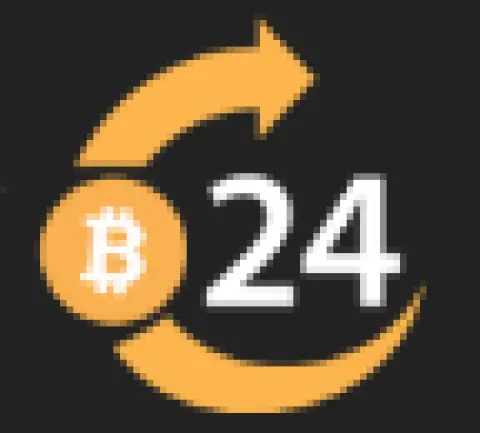Table of Contents:
Understanding the Basics of DeFi Options Trading
To truly grasp the potential of DeFi options trading, it's essential to understand its foundational elements. Unlike traditional financial options, DeFi options operate on decentralized protocols, removing intermediaries and offering users greater control over their assets. These options are smart contract-based, meaning their execution is automated and trustless, relying solely on code.
What sets DeFi options apart? The primary distinction lies in their accessibility and transparency. Anyone with a crypto wallet can participate, and all transactions are recorded on the blockchain, ensuring a high level of trust and accountability. Moreover, DeFi options are often settled in cryptocurrencies like ETH or stablecoins, which eliminates the need for fiat currency involvement.
Key components of DeFi options:
- Underlying Assets: These are typically cryptocurrencies such as Ethereum (ETH), Bitcoin (BTC), or stablecoins like USDC. The value of the option is tied to the performance of these assets.
- Strike Price: This is the predetermined price at which the option holder can buy (call) or sell (put) the underlying asset.
- Expiration Date: DeFi options have a fixed duration, after which they expire. This can range from a few hours to several weeks, depending on the platform.
- Premium: The cost of purchasing the option, paid upfront by the buyer to the seller. In DeFi, this is often calculated dynamically based on market conditions.
One unique aspect of DeFi options is the flexibility they offer in terms of trading strategies. Users can employ them for speculative purposes, hedging against potential losses, or even generating passive income by selling options as liquidity providers. However, the decentralized nature of these platforms also introduces challenges, such as smart contract vulnerabilities and liquidity constraints, which traders must navigate carefully.
Understanding these basics lays the groundwork for exploring more advanced strategies and insights in DeFi options trading. With the right knowledge, traders can leverage these tools to maximize their returns while managing risks effectively.
Key Features of DeFi Options Platforms
DeFi options platforms are revolutionizing the way traders interact with financial derivatives by offering decentralized, transparent, and accessible alternatives to traditional systems. These platforms come with distinct features that set them apart, enabling users to tailor their trading strategies and manage risks effectively. Below are the key features that define the functionality and appeal of DeFi options platforms:
- Smart Contract Automation: DeFi options platforms rely on smart contracts to execute trades and manage settlements without the need for intermediaries. This ensures trustless transactions and minimizes human error.
- Non-Custodial Nature: Users retain full control over their funds throughout the trading process. Unlike centralized platforms, DeFi options do not require users to deposit assets into a third-party account, reducing the risk of hacks or mismanagement.
- Customizable Option Parameters: Many platforms allow traders to define specific parameters such as strike price, expiration date, and premium. This flexibility enables users to align trades with their individual market outlooks and risk appetites.
- Liquidity Pools: DeFi options platforms often utilize liquidity pools to facilitate trades. Liquidity providers earn rewards by supplying assets to these pools, ensuring sufficient market depth for seamless trading.
- Decentralized Pricing Mechanisms: Pricing is typically determined by algorithms or oracles, ensuring that premiums and payouts reflect real-time market conditions. This eliminates the potential for price manipulation by centralized entities.
- Tokenized Options: Many platforms issue tokenized options, which are represented as ERC-20 tokens. These tokens can be traded on secondary markets, providing additional liquidity and flexibility for traders.
- Accessibility: With just a crypto wallet and internet connection, users worldwide can access these platforms. This inclusivity democratizes financial markets, opening up opportunities for individuals in regions with limited access to traditional financial systems.
- Transparency and Security: All transactions and contract details are recorded on the blockchain, offering full transparency. Additionally, many platforms undergo rigorous audits to ensure the security of their smart contracts.
By integrating these features, DeFi options platforms empower traders with tools that are not only innovative but also aligned with the principles of decentralization. As the ecosystem evolves, these platforms are likely to introduce even more advanced functionalities, further enhancing their appeal to both novice and experienced traders.
Top DeFi Options Platforms Compared: Hegic vs. Opyn
When it comes to DeFi options trading, two platforms often stand out for their unique approaches and features: Hegic and Opyn. Both platforms cater to traders seeking decentralized solutions, but they differ significantly in their methodologies, target audiences, and functionalities. Here's a closer look at how these two platforms compare:
- Core Mechanism: Hegic operates on a peer-to-pool model, where liquidity providers contribute to a shared pool, and options buyers interact directly with this pool. This simplifies the process for users but limits customization. Opyn, on the other hand, uses an order book model combined with tokenized options (oTokens). This approach offers greater flexibility, allowing users to trade options on secondary markets.
- Asset Support: Hegic focuses on a limited range of assets, primarily ETH and WBTC, making it ideal for traders targeting these major cryptocurrencies. Opyn supports a broader array of assets, including stablecoins and other ERC-20 tokens, appealing to users seeking diversification.
- Flexibility and Customization: Hegic offers a straightforward interface with predefined parameters, which is user-friendly but less adaptable for advanced strategies. Opyn allows users to customize strike prices, expiration dates, and premiums, catering to more experienced traders who require precision in their trades.
- Risk and Reward for Liquidity Providers: In Hegic, liquidity providers earn rewards from premiums but share the risk collectively, as payouts are drawn from the pool. This risk-sharing model can lead to unpredictable returns. Opyn’s model lets liquidity providers individually define their exposure by selling specific options, giving them more control over their risk-reward profile.
- Fee Structures: Hegic employs a flat fee model, which simplifies cost calculations for users but may not always reflect market conditions. Opyn’s fees are dynamic, influenced by factors like volatility and demand, providing a more market-driven pricing mechanism.
- Community and Governance: Hegic incentivizes participation through its native HEGIC token, which grants holders governance rights and staking rewards. Opyn integrates governance via its OGV token, enabling users to vote on protocol upgrades and changes, fostering a more decentralized decision-making process.
In summary, Hegic is best suited for beginners or those seeking simplicity, while Opyn caters to advanced traders who value flexibility and broader asset support. The choice between the two depends on your trading goals, experience level, and the degree of customization you require. Both platforms, however, exemplify the innovation driving the DeFi options space forward.
Advantages and Challenges of Trading DeFi Options
Trading DeFi options presents a unique blend of opportunities and obstacles, making it a compelling yet complex avenue for crypto traders. Understanding these advantages and challenges is essential for navigating this dynamic landscape effectively.
Advantages of Trading DeFi Options
- Enhanced Profit Potential: DeFi options allow traders to leverage price movements without needing to own the underlying asset. This can amplify returns, especially in volatile markets, while requiring less upfront capital.
- Hedging Against Market Risks: By using put options, traders can safeguard their portfolios against significant downturns, ensuring stability even in bearish conditions.
- Global Accessibility: DeFi options platforms operate without geographic restrictions, enabling anyone with internet access and a crypto wallet to participate, regardless of their location.
- Innovation and Customization: Many platforms offer innovative tools and customizable parameters, allowing traders to design strategies tailored to their specific risk tolerance and market outlook.
- Yield Opportunities for Liquidity Providers: Beyond trading, DeFi options enable users to earn passive income by providing liquidity, often with attractive reward structures.
Challenges of Trading DeFi Options
- High Volatility and Unpredictability: While volatility creates opportunities, it also increases the risk of significant losses. Misjudging market movements can quickly erode capital.
- Complexity for Beginners: The technical nature of DeFi options, combined with the need to understand smart contracts and pricing models, can be overwhelming for newcomers.
- Smart Contract Vulnerabilities: Despite audits, smart contracts are not immune to bugs or exploits, which can lead to financial losses for traders and liquidity providers.
- Liquidity Constraints: Some platforms may suffer from insufficient liquidity, leading to wider spreads and less favorable pricing for traders.
- Regulatory Uncertainty: The evolving regulatory landscape for DeFi poses potential risks, as future regulations could impact platform operations or user accessibility.
In conclusion, while DeFi options trading offers significant advantages such as flexibility, global access, and hedging capabilities, it also comes with challenges that require careful consideration. Traders must weigh these factors, conduct thorough research, and adopt sound risk management practices to maximize their success in this innovative financial frontier.
Effective Strategies for DeFi Options Trading
DeFi options trading is not just about understanding the mechanics; it’s about employing effective strategies that align with market conditions and individual goals. Below are some advanced and actionable strategies tailored for DeFi options traders seeking to optimize their performance:
1. Long Straddle for Volatility Plays
When anticipating significant price swings but unsure of the direction, a long straddle can be effective. This involves purchasing both a call and a put option with the same strike price and expiration date. If the asset's price moves significantly in either direction, the gains from one option can offset the cost of both, leading to potential profits. This strategy works best in highly volatile markets, often seen in crypto trading.
2. Covered Call for Passive Income
For traders holding substantial amounts of a specific cryptocurrency, selling call options against their holdings can generate consistent income. This strategy, known as a covered call, is particularly useful in a neutral or slightly bullish market. The premium earned acts as a buffer against minor price drops, while still allowing the trader to benefit from modest price increases up to the strike price.
3. Protective Put for Risk Mitigation
In uncertain market conditions, purchasing a put option to protect the value of your crypto holdings can be a prudent move. This strategy, called a protective put, acts as an insurance policy, limiting potential losses while allowing for upside gains if the market moves favorably.
4. Iron Condor for Range-Bound Markets
In periods of low volatility, an iron condor strategy can be employed to capitalize on stable price movements. This involves selling an out-of-the-money call and put option while simultaneously buying further out-of-the-money options to limit risk. The goal is to profit from the premiums collected, provided the asset's price remains within a defined range.
5. Ratio Spreads for Cost Efficiency
Ratio spreads involve buying a smaller number of options and selling a larger number of options at a different strike price. For instance, purchasing one call option and selling two call options at a higher strike price. This strategy reduces upfront costs and can generate profits in specific market scenarios, though it requires careful risk management due to its complexity.
6. Liquidity Mining with Options
Some DeFi platforms allow users to provide liquidity to options pools in exchange for rewards. By participating in these pools, traders can earn passive income while supporting the ecosystem. However, it’s crucial to assess the risk of impermanent loss and the platform’s reliability before committing funds.
7. Combining Options with Spot Trading
Integrating options with spot trading can enhance overall portfolio performance. For example, using options to hedge against potential losses in spot positions or leveraging options to amplify gains during bullish trends. This hybrid approach requires a deep understanding of both markets but can yield significant benefits when executed correctly.
Each of these strategies serves a specific purpose and caters to different market conditions. The key to success lies in selecting the right strategy based on your market outlook, risk tolerance, and trading objectives. By combining these approaches with diligent research and disciplined execution, traders can unlock the full potential of DeFi options trading.
Risk Management in DeFi Options: Tips and Best Practices
Effective risk management is the cornerstone of successful DeFi options trading. While the decentralized nature of these platforms offers unique opportunities, it also introduces distinct risks that require careful planning and execution. Below are actionable tips and best practices to mitigate risks and safeguard your investments:
- Start Small and Scale Gradually: For new traders, it’s wise to begin with smaller positions. This approach minimizes potential losses while allowing you to gain hands-on experience with the mechanics of DeFi options trading.
- Understand Maximum Loss Potential: Always calculate the maximum potential loss before entering a trade. For buyers of options, the maximum loss is limited to the premium paid, but for sellers, the risk can be significantly higher. Knowing these limits is crucial for informed decision-making.
- Diversify Across Platforms and Assets: Avoid concentrating your capital on a single platform or asset. Diversification reduces exposure to platform-specific vulnerabilities, such as smart contract exploits, and spreads risk across multiple markets.
- Monitor Platform Security: Choose platforms with a proven track record of security audits and transparent operations. Platforms that partner with reputable oracle providers and undergo regular third-party audits are generally more reliable.
- Use Expiration Dates Strategically: Align the expiration dates of your options with your market outlook. Short-term options are more sensitive to price movements but carry higher premiums, while longer-term options provide more flexibility but may tie up capital for extended periods.
- Implement Stop-Loss Strategies: Although options have built-in risk limits for buyers, combining them with stop-loss strategies in spot markets can further protect your portfolio. For instance, if an underlying asset’s price moves unfavorably, a stop-loss can automatically exit your position to minimize losses.
- Stay Updated on Market Conditions: Market volatility, liquidity levels, and macroeconomic factors can all impact the performance of DeFi options. Regularly monitor these variables to adjust your strategies accordingly.
- Evaluate Implied Volatility: Implied volatility significantly affects option premiums. Avoid overpaying for options during periods of extreme volatility unless you have a strong directional conviction. Instead, look for opportunities when volatility is mispriced.
- Allocate a Risk Budget: Define a specific portion of your portfolio for options trading and stick to it. This "risk budget" ensures that losses in options trading do not jeopardize your broader investment goals.
- Educate Yourself Continuously: The DeFi space evolves rapidly, with new platforms, tools, and strategies emerging frequently. Stay informed through community forums, whitepapers, and expert analyses to refine your risk management approach.
By incorporating these best practices into your trading routine, you can mitigate risks while maximizing the potential of DeFi options. Remember, successful trading is not just about making profits—it’s about preserving capital and maintaining a disciplined, informed approach to every decision.
Market Analysis for Successful DeFi Options Trades
Market analysis is a critical component of executing successful DeFi options trades. Unlike traditional markets, the decentralized finance ecosystem introduces unique variables that traders must evaluate to make informed decisions. By leveraging both quantitative and qualitative analysis, traders can better anticipate market movements and optimize their strategies.
1. Analyze On-Chain Data
DeFi markets are inherently transparent, offering access to valuable on-chain data. Metrics such as wallet activity, transaction volumes, and liquidity pool inflows can provide insights into market sentiment and potential price movements. For example, a sudden spike in liquidity for a specific asset may indicate increased interest or upcoming volatility.
2. Monitor Implied Volatility (IV)
Implied volatility is a key factor in pricing options. Higher IV often leads to more expensive premiums, reflecting market uncertainty. Traders should track IV trends to identify periods of overpricing or underpricing in the options market. This can help in selecting the right time to buy or sell options.
3. Evaluate Macro Trends
Broader market trends, such as Bitcoin’s dominance or the performance of major DeFi tokens, often influence the entire ecosystem. A bullish trend in Ethereum, for instance, might increase demand for call options on ETH. Conversely, bearish macro trends could drive interest in protective puts.
4. Assess Platform-Specific Metrics
Each DeFi options platform operates differently, and their internal metrics can provide valuable clues. For instance, the total value locked (TVL) in a platform’s liquidity pools or the trading volume of specific options contracts can indicate user confidence and market activity. Platforms with consistently high TVL often offer better liquidity and tighter spreads.
5. Track News and Protocol Updates
DeFi markets are highly sensitive to news, including protocol upgrades, partnerships, or regulatory developments. Staying updated on these events can help traders anticipate shifts in market sentiment. For example, the announcement of a major upgrade to a DeFi protocol might trigger increased demand for options tied to its native token.
6. Use Technical Analysis
While fundamental data is crucial, technical analysis remains a powerful tool for short-term trading. Key indicators such as moving averages, relative strength index (RSI), and Bollinger Bands can help identify entry and exit points for options trades. Combining these with DeFi-specific metrics creates a more comprehensive analysis framework.
7. Understand Seasonal Patterns
Cryptocurrency markets often exhibit seasonal behaviors, such as increased activity during bull runs or quieter periods in market corrections. Recognizing these patterns can help traders align their options strategies with the broader market cycle.
By integrating these analytical approaches, traders can enhance their decision-making and increase the likelihood of profitable DeFi options trades. The decentralized nature of these markets provides a wealth of data, but success ultimately depends on the trader’s ability to interpret and act on it effectively.
How DeFi Options Enhance Portfolio Diversification
DeFi options have emerged as a powerful tool for enhancing portfolio diversification, offering unique opportunities that traditional financial instruments often cannot match. By incorporating DeFi options into a portfolio, traders and investors can manage risk more effectively, access new markets, and achieve a balanced exposure to both volatility and stability.
1. Expanding Asset Coverage
DeFi options allow exposure to a wide range of digital assets, from major cryptocurrencies like ETH and BTC to stablecoins and emerging tokens. This diversity enables investors to hedge or speculate across various asset classes, creating a more robust and balanced portfolio. For instance, pairing options on volatile assets with stablecoin-based strategies can help mitigate risk during market downturns.
2. Balancing Risk and Reward
Options inherently provide flexibility in managing risk. By combining call and put options, traders can create strategies that align with their risk tolerance. For example, selling covered calls can generate income in a sideways market, while buying protective puts safeguards against significant losses. This ability to fine-tune risk exposure is a key advantage for portfolio diversification.
3. Access to Non-Correlated Strategies
Unlike spot trading, options trading often operates independently of direct market movements. Strategies like straddles or strangles, which profit from volatility rather than directional trends, introduce non-correlated returns to a portfolio. This reduces overall portfolio dependency on market direction, providing stability during unpredictable conditions.
4. Leveraging Market Volatility
Volatility is a defining characteristic of cryptocurrency markets, and DeFi options allow investors to capitalize on it. By integrating options strategies that benefit from price swings, such as long straddles or iron condors, traders can turn market turbulence into an opportunity rather than a risk. This adds a dynamic layer to portfolio management, enhancing potential returns.
5. Hedging Against Systemic Risks
DeFi options provide a mechanism to hedge against systemic risks inherent in the crypto ecosystem, such as regulatory changes or protocol vulnerabilities. For instance, purchasing put options on a major token can act as insurance against adverse events, ensuring that the broader portfolio remains protected.
6. Enhancing Yield Opportunities
Beyond trading, DeFi options platforms often offer yield-generating opportunities for liquidity providers. By supplying liquidity to options pools, investors can earn premiums, adding an additional income stream to their portfolio. This passive income complements other investment strategies, further diversifying the portfolio’s revenue sources.
Incorporating DeFi options into a portfolio is not just about adding another asset class—it’s about unlocking new dimensions of risk management and return generation. By strategically utilizing options, investors can achieve a more diversified, resilient, and adaptable portfolio that thrives in the ever-evolving DeFi landscape.
Future Trends and Innovations in DeFi Options Trading
The DeFi options trading landscape is evolving rapidly, driven by technological advancements and increasing user demand for innovative financial tools. As the ecosystem matures, several key trends and innovations are shaping its future, promising to redefine how traders interact with decentralized options markets.
1. Expansion of Multi-Asset Support
One of the most anticipated developments is the integration of a broader range of assets into DeFi options platforms. Beyond major cryptocurrencies like ETH and BTC, platforms are beginning to offer options on niche tokens, stablecoins, and even tokenized real-world assets. This diversification enables traders to access a wider spectrum of markets, catering to both speculative and hedging needs.
2. Cross-Chain Compatibility
With the rise of cross-chain protocols, DeFi options trading is no longer confined to a single blockchain. Innovations in interoperability are enabling options platforms to operate across multiple networks, such as Ethereum, Binance Smart Chain, and Solana. This cross-chain functionality reduces fragmentation, enhances liquidity, and provides users with more seamless trading experiences.
3. Automated Strategy Execution
Automation is becoming a cornerstone of DeFi options trading. Platforms are introducing tools that allow users to deploy pre-configured strategies, such as covered calls or protective puts, without manual intervention. These "set-and-forget" features lower the barrier to entry for new traders while improving efficiency for experienced users.
4. Dynamic Pricing Models
Traditional options pricing models are being reimagined in the DeFi space. Innovations in dynamic pricing, powered by advanced algorithms and real-time data oracles, are making premiums more accurate and reflective of current market conditions. This ensures fairer pricing for both buyers and sellers, enhancing market efficiency.
5. Gamification and User Engagement
To attract and retain users, some platforms are incorporating gamification elements into their interfaces. Features like leaderboards, rewards for frequent trading, and community-driven competitions are fostering greater engagement. These innovations not only make trading more interactive but also help educate users about complex strategies in a more accessible way.
6. Integration of AI and Machine Learning
Artificial intelligence and machine learning are beginning to play a significant role in DeFi options trading. These technologies are being used to analyze market trends, predict volatility, and optimize trading strategies. As AI tools become more sophisticated, they will likely empower traders with actionable insights and automated decision-making capabilities.
7. Regulatory-Ready Protocols
As global regulators turn their attention to DeFi, platforms are proactively developing compliance-friendly solutions. Innovations such as identity verification layers and regulatory reporting tools are being integrated to ensure that DeFi options trading can coexist with evolving legal frameworks. This trend is crucial for fostering mainstream adoption while maintaining the decentralized ethos.
8. Tokenized Risk Management Products
Another emerging trend is the creation of tokenized risk management products that complement options trading. These products allow users to hedge against specific risks, such as impermanent loss in liquidity pools or protocol exploits, adding an extra layer of security to DeFi investments.
In conclusion, the future of DeFi options trading is brimming with possibilities. From cross-chain operability to AI-driven insights, these innovations are set to make the market more accessible, efficient, and user-friendly. Traders who stay ahead of these trends will be well-positioned to capitalize on the next wave of opportunities in this transformative space.
Conclusion: Mastering DeFi Options for Informed Decisions
Mastering DeFi options trading requires more than just understanding the mechanics of decentralized platforms—it demands a proactive approach to learning, adapting, and decision-making. The decentralized finance ecosystem is dynamic, with innovations and market conditions constantly reshaping the landscape. To navigate this complexity effectively, traders must adopt a mindset of continuous improvement and strategic thinking.
Building a Knowledge-Driven Approach
Successful DeFi options traders prioritize knowledge acquisition. This includes staying updated on emerging platforms, exploring advanced strategies, and understanding the implications of macroeconomic trends on decentralized markets. Engaging with community forums, participating in governance discussions, and analyzing platform-specific data are critical steps to gaining an edge in this competitive space.
Leveraging Data for Precision
Data-driven decision-making is a hallmark of informed trading. By utilizing tools that provide real-time analytics, such as implied volatility trackers, liquidity flow dashboards, and historical performance metrics, traders can refine their strategies and minimize guesswork. Precision, supported by data, is key to maximizing returns while mitigating risks.
Embracing Innovation Responsibly
While DeFi options platforms are at the forefront of financial innovation, traders must approach new tools and features with caution. Testing new functionalities in controlled environments, such as testnets or with smaller capital allocations, can help identify potential risks without jeopardizing significant funds. Responsible experimentation ensures that traders remain adaptable without overexposing themselves to untested solutions.
Adapting to Evolving Market Dynamics
The DeFi market is highly reactive to technological advancements, regulatory developments, and shifts in user behavior. Traders who succeed in this space are those who can quickly adapt their strategies to align with these changes. Flexibility, coupled with a forward-looking perspective, enables traders to capitalize on opportunities that others might overlook.
Final Thoughts
DeFi options trading is not just a financial tool—it’s a gateway to a more decentralized and inclusive financial future. By mastering its intricacies and staying committed to informed decision-making, traders can unlock the full potential of this innovative market. The journey requires diligence, but the rewards—both in terms of financial gains and personal growth—are well worth the effort.
FAQ on Decentralized Finance (DeFi) Options Trading
What are DeFi options and how do they differ from traditional options?
DeFi options are financial derivatives that operate on decentralized platforms using smart contracts. Unlike traditional options that require intermediaries, DeFi options are trustless and transparent, allowing users to trade directly without third-party involvement.
What are the key benefits of trading DeFi options?
Some key benefits include the ability to hedge against market risks, enhanced profit potential through leveraged trades, global accessibility without geographic restrictions, and opportunities for passive income via liquidity provision.
Which platforms are popular for trading DeFi options?
Platforms like Hegic and Opyn are popular choices. Hegic uses a peer-to-pool model for straightforward trading, while Opyn provides tokenized options (oTokens) with more flexibility and customization for advanced traders.
What are common strategies used in DeFi options trading?
Some common strategies include Long Straddles for volatility, Covered Calls for passive income, Protective Puts for hedging, and Iron Condors for profiting in range-bound markets. Each strategy is tailored to specific market conditions.
What are the main risks involved in DeFi options trading?
Risks include high market volatility, smart contract vulnerabilities, liquidity constraints on some platforms, and the complexity of options trading for beginners. Proper risk management and an understanding of the underlying protocols can mitigate these risks.












